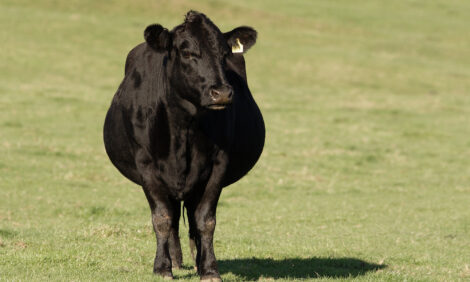



Getting Into Beef Production
There are many aspects of beef production that a farm can focus on, or some farms opt to get involved in all aspects. If you are just thinking about starting in beef you need to decide what aspect of production fits your land, labour and financial resources.The advantages and disadvantages of several production systems have been examined by Penn State University Extension in a series of factsheets, discussing marketing, management, forage, feeding and risk as well as offering sample budgets.
Beef Background Production
Backgrounding is a beef production system that involves maximal use of pasture and forages from the time the calves are weaned until they are placed in a feedlot. An optimal backgrounding plan will induce up to 800 pounds of weight gain in your beef calves.
Before selecting a backgrounding program, be sure you have a good marketing plan. A marketing plan might include putting cattle in your own feedlot for finishing or selling them as feeders.
The keys to success with backgrounding are to carefully manage forage provision and having a good preventative health plan.
Steer calves weighing 400-600 pounds in thin to moderate condition are best suited for most backgrounding programs. These calves are ready for finishing when they reach 850-1,000 pounds and usually are in high demand by cattle feeders.
Backgrounding requires some additional time to finish an animal.
However, the savings gained by purchasing less feed grains during the major growth phase generally outweigh the extra finishing time. Rather than feeding lightweight calves high-concentrate rations early on, cattle feeders often buy heavier-weight cattle in hopes of reducing the grain requirements for producing finished beef.
Read the factsheet on beef background production here.
Beef Cow-Calf Production
On average, about 2.2 years elapses between breeding and the age at which heifer calves may be harvested. Producers may retain these calves for herd expansion or sell them, along with steers, to feedlot operators.
The beef cow-calf business is well adapted to small-scale and part-time farmers who have land suitable for pasture and hay production.
Because of the wide distribution of cow-calf operations throughout the United States, there are a lot of local markets for feeder calves.
The sale prices of calves vary greatly depending on breed, weight, health, uniformity, group size, and the way in which the cattle have been managed.
Regardless of whether the calves are sold through a local auction, direct to a cattle feeder, or through a broker, preparation for sale greatly influences sales price and profitability.
Using a preconditioning program is an important practice that not only improves sale price but also enhances calf well-being on the farm and in the feedlot.
Preconditioning includes weaning the calves about six weeks before sale time, starting them on feed, castrating, dehorning, vaccinating, deworming, and perhaps implanting them with a growth promotant. These practices help ensure that the calves will stay healthy and have a good start in the feedlots.
Find out more about beef cow-calf production in the factsheet here.
Dairy-Beef Production
Production of high-quality dairy-beef is relatively new to the beef industry and depends almost entirely on Holstein bull calves.
Until recently, most Holstein calves were sold for veal. However, the high-quality meat produced when these animals are fed high-energy diets and harvested at a young age (12 to 14 months) has become popular with consumers.
Dairy-beef production lends itself well to small-scale and part-time farming operations and also can be an auxiliary enterprise for dairy operations. Existing facilities can be used to feed and house the steers, and farm-grain feeds can be used.
In addition, this enterprise is easy to enter when profit projections are favourable and to exit when unfavourable.
The main disadvantage of a dairy-beef enterprise is the limited availability of calves that have started eating grain feeds.
Producers should carefully research local markets and develop marketing strategies before beginning a dairy-beef operation.
Read more about dairy-beef production methods in the factsheet here.


